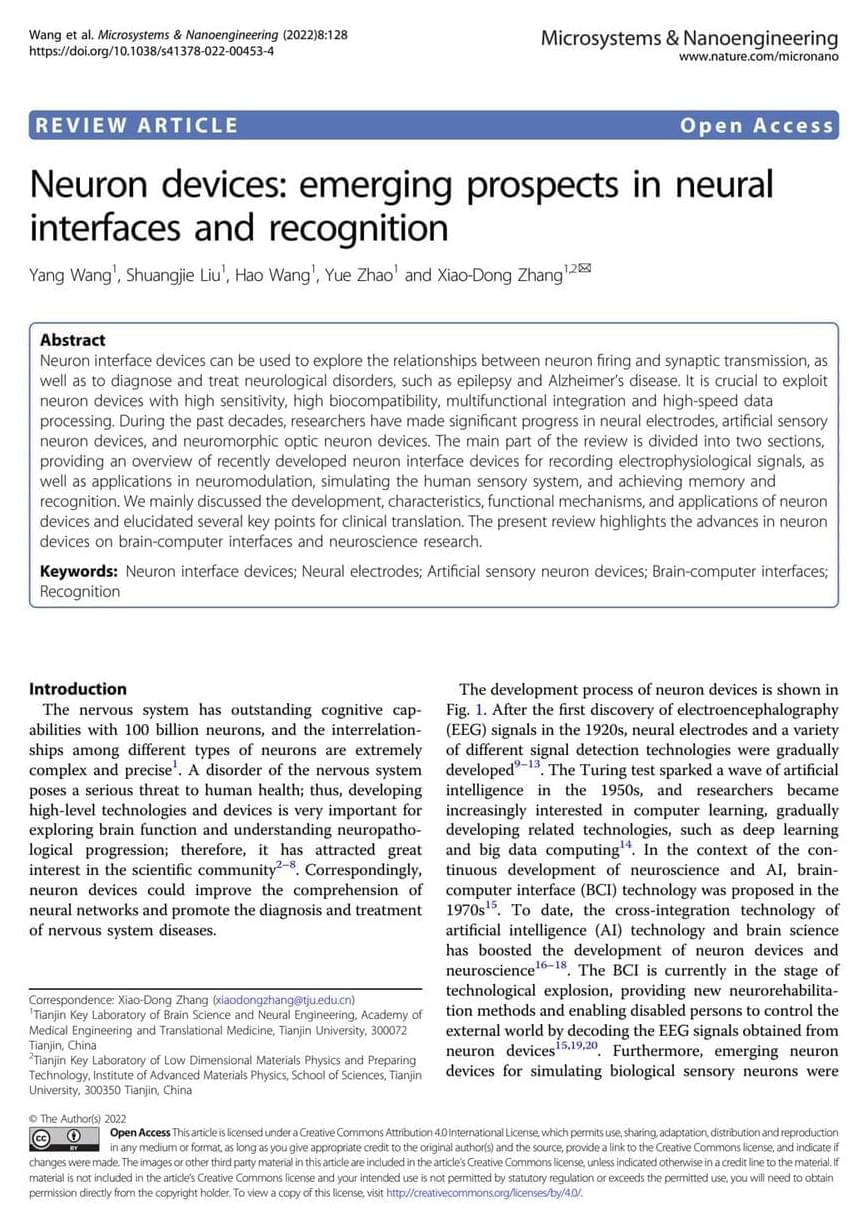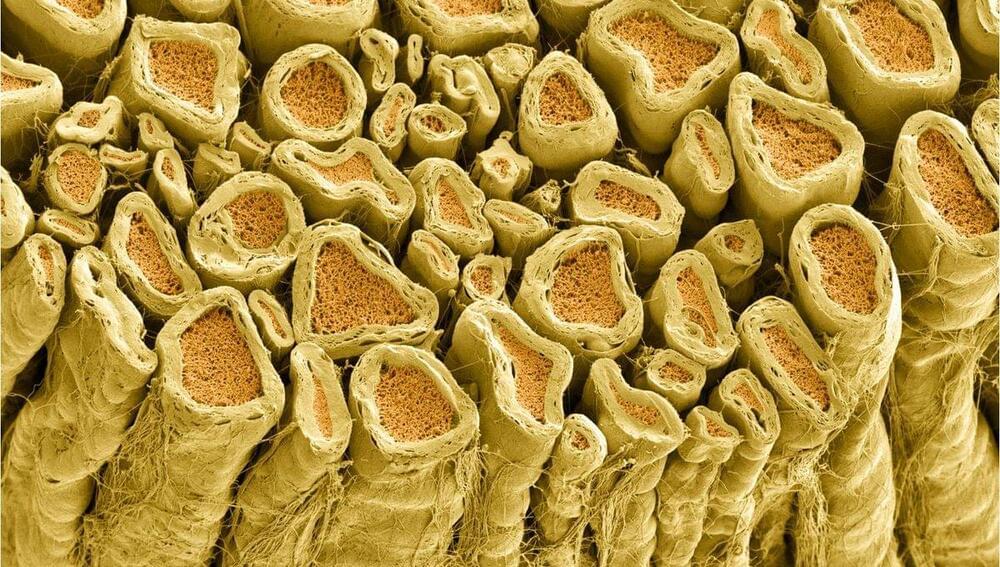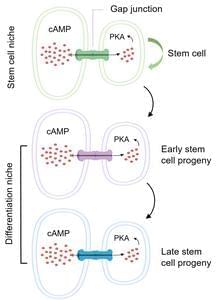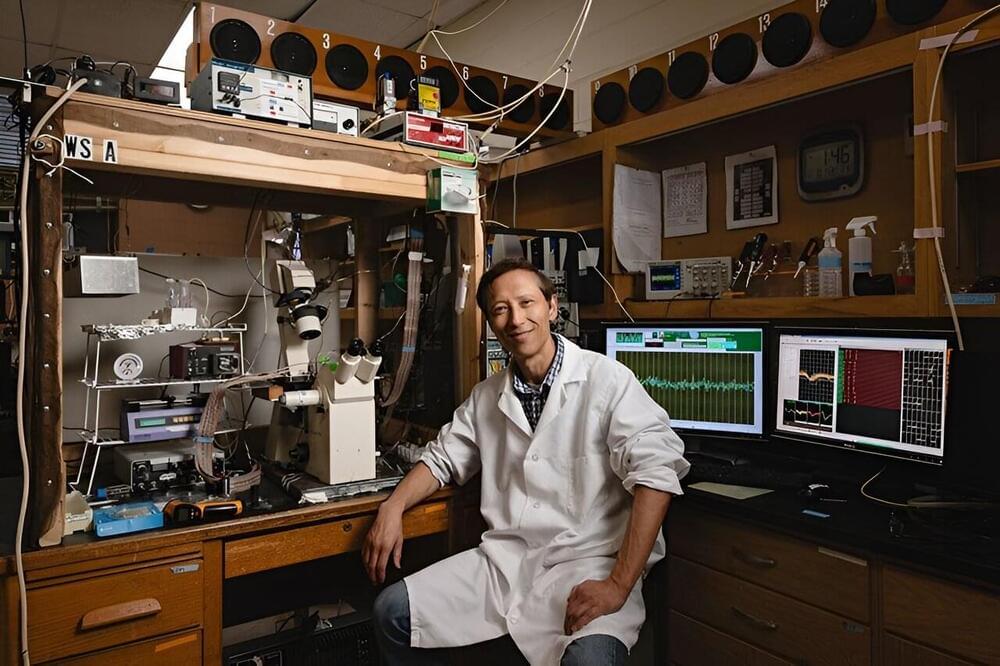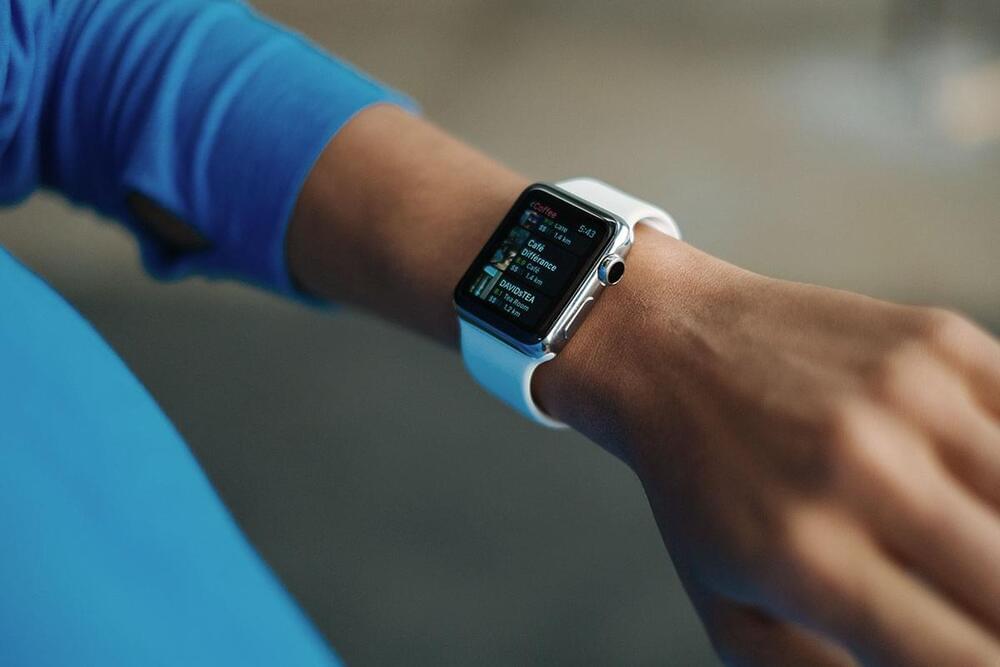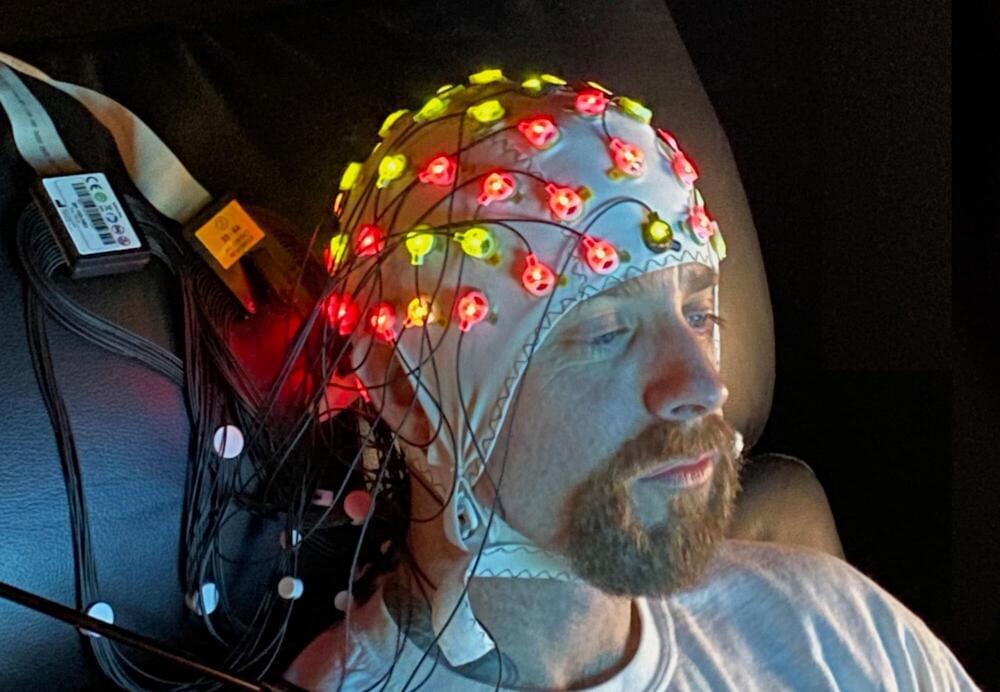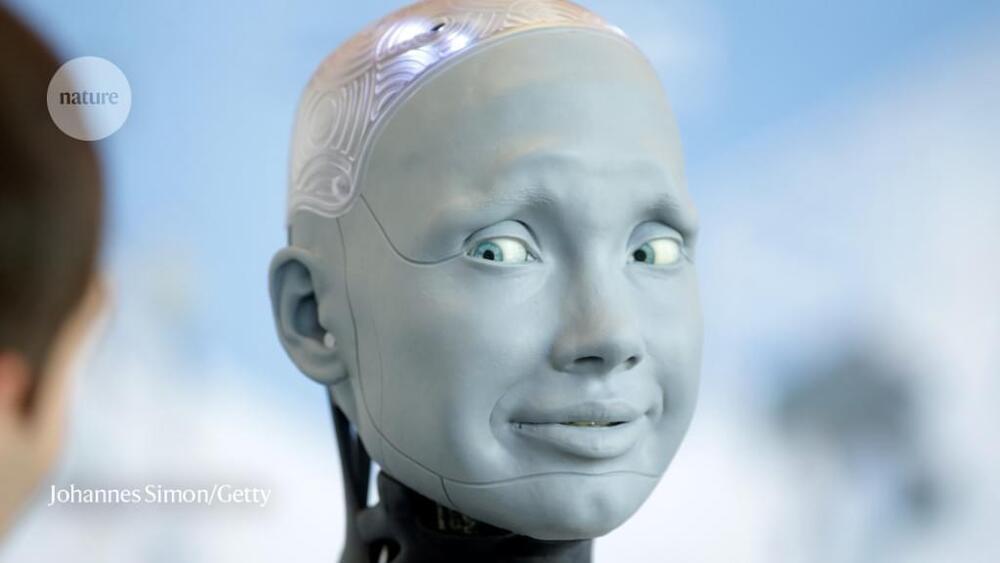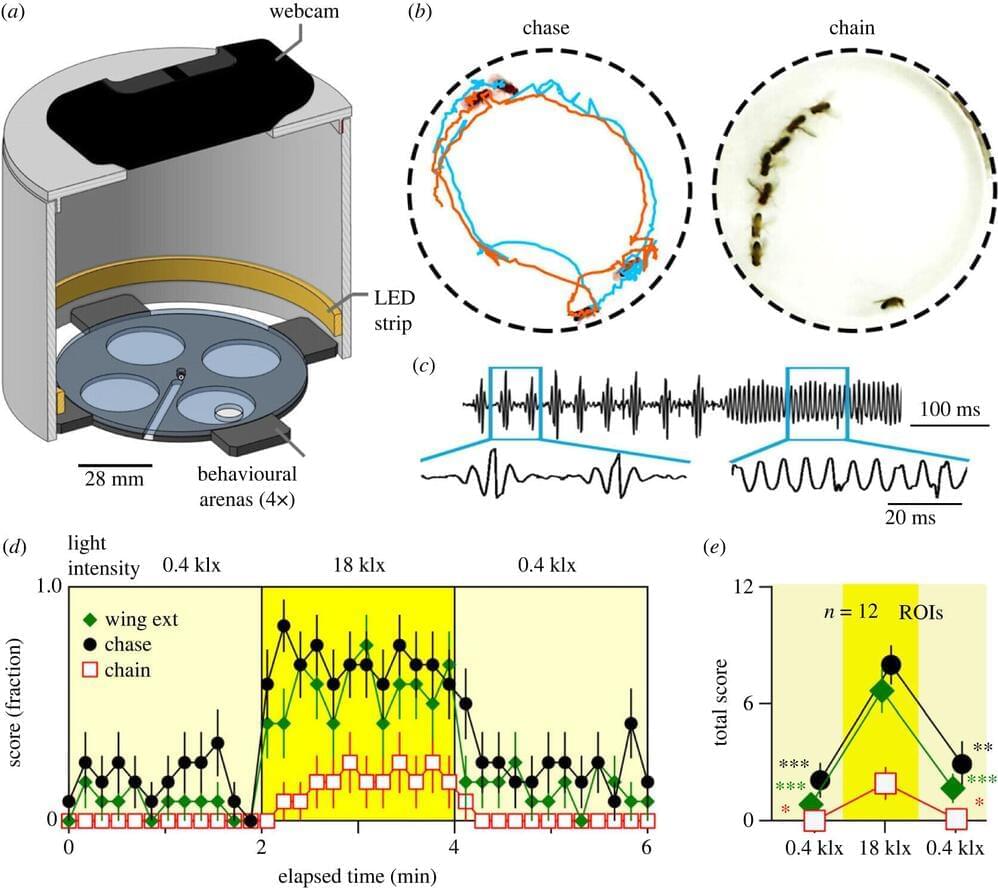Archive for the ‘neuroscience’ category: Page 256
Aug 30, 2023
Regenerating Myelin In The Brain Could Be Possible Thanks To New Discovery
Posted by Omuterema Akhahenda in categories: biotech/medical, neuroscience
A biological pathway through which myelin, the protective coating on nerve fibers, can be repaired and regenerated has been discovered in a new study. The ramifications of this finding could be far-reaching for those with neurological diseases affecting myelin, many of which are currently untreatable.
If the axons that shoot out from the cell bodies of neurons are like electrical wires, you can think of the myelin sheath as the insulating plastic outer coating. In the brain, these sheathed nerve fibers make up most of the tissue known as white matter, but axons throughout the body are also coated in myelin.
The myelin sheath’s main functions are to protect the axon, to ensure electrical nerve impulses can travel quickly down it, and to maintain the strength of these impulses as they travel over what can be very long distances.
Aug 30, 2023
HKUST researchers find how stem cell niche guides differentiation into functional cells, significant step towards stem cell therapies
Posted by Omuterema Akhahenda in categories: biotech/medical, neuroscience
Researchers at the Hong Kong University of Science and Technology (HKUST) have found how stem cells’ surrounding environment controls them to differentiate into functional cells, a breakthrough critical for using stem cells to treat various human diseases in the future.
Stem cells play a crucial role in supporting normal development and maintaining tissue homeostasis in adults. Their unique ability to replicate and differentiate into specialized cells holds great promise in treating diseases like Parkinson’s disease, Alzheimer’s disease and type I diabetes by replacing damaged or diseased cells with healthy ones.
Despite their potential therapeutic benefits, one of the major challenges for cell therapies lies in efficiently differentiating stem cells into functional cells to replace damaged cells in degenerative tissue. This task is particularly difficult due to the limited understanding of the underlying molecular mechanism by which the tissues around stem cells, known as the stem cell niche, guide stem cell progeny to differentiate into proper functional cell types.
Aug 29, 2023
Air pollution from different emission sources is associated with incident dementia
Posted by Shubham Ghosh Roy in categories: food, life extension, neuroscience, policy, sustainability
NIH-funded study suggests reducing exposure to airborne particulates may decrease dementia risk.
Higher rates of new cases of dementia in a population over time — known as incident dementia — are linked to long-term exposure to fine particulate matter (PM2.5) air pollution, especially from agriculture and open fires, according to a study funded by the National Institutes of Health and published in JAMA Internal Medicine. Scientists found that 15% of older adults developed incident dementia during the average follow-up of 10 years.
“As we experience the effects of air pollution from wildfires and other emissions locally and internationally, these findings contribute to the strong evidence needed to best inform health and policy decisions,” said Richard J. Hodes, M.D., director, National Institute on Aging (NIA), part of NIH. “These results are an example of effectively using federally funded research data to help address critical health risks.”
Aug 29, 2023
A ‘mini-brain’ traces the link between concussion and Alzheimer’s disease
Posted by Shubham Ghosh Roy in categories: biotech/medical, neuroscience
How much time elapses between a blow to the head and the start of damage associated with Alzheimer’s disease?
A device that makes it possible to track the effects of concussive force on a functioning cluster of brain cells suggests the answer is in hours. The “traumatic brain injury (TBI) on a chip” being developed at Purdue University opens a window into a cause and effect that announces itself with the passage of decades but is exceedingly difficult to trace back to its origins.
“We’re basically creating a miniature brain that we can hit and then study,” said Riyi Shi, lead researcher and the Mari Hulman George Endowed Professor of Applied Neuroscience in Purdue University’s College of Veterinary Medicine. “We know there’s a link between TBI and Alzheimer’s; that’s well established in clinical observation. But teasing out the basic essential pathway is not easy. With the TBI on a chip, we’re able to test a lot of hypotheses that would be very difficult to do in living animals.”
Aug 29, 2023
Memristors make versatile artificial synapses for neuromorphic computing
Posted by Shailesh Prasad in categories: computing, mobile phones, neuroscience
Most modern computers – from primitive room-filling behemoths like the ENIAC to the smartphone in your pocket – are built according to a set of principles laid out by the mathematician John von Neumann in 1945. This von Neumann architecture, as it is known, incorporates many familiar elements, including a central processing unit, a memory for storing data and instructions, and input and output devices. Despite its ubiquity, though, von Neumann’s model is not the only way of building a computer, and for some applications, it is not the most desirable, either.
One emerging alternative is known as neuromorphic computing. As the name implies, neuromorphic computers are inspired by the architecture of the human brain and use highly connected artificial neurons and artificial synapses to simulate the brain’s structure and functions. For researchers like Le Zhao of China’s Qilu University of Technology, this neuromorphic model offers a fantastic opportunity to develop a new paradigm for computing – as long as we can develop artificial neurons and synapses that have the right properties.
In a recent paper published in Materials Futures, Zhao and colleagues describe how to use a memristor – essentially a switch that “remembers” which electric state it was in, even after its power is turned off – to emulate the function of a synapse in the brain. Here, he explains the team’s goals and plans.
Aug 28, 2023
Aspen Neuroscience gears up for Parkinson’s trial with digital health monitoring collab
Posted by Shubham Ghosh Roy in categories: biotech/medical, life extension, neuroscience
Personalized regenerative medicine company Aspen Neuroscience has joined forces with Emerald Innovations and Rune Labs to integrate digital health monitoring technology into its Trial Ready Screening Cohort Study. The study, which began in 2022, seeks to identify potential patient candidates for a future clinical trial of Aspen’s personalized cell therapy (ANPD001) in Parkinson’s disease.
Aspen’s approach targets Parkinson’s disease by replenishing lost dopamine neurons, addressing both motor and non-motor symptoms of the disease. By combining cutting-edge biosensors, software analytics, and cellular therapies, the new collaboration aims to significantly improve the quality of life for those living with Parkinson’s disease.
Harnessing the capabilities of Emerald Innovations’ ‘invisible’ off-body sensors and Rune Labs’ precision neurology software, Aspen intends to bolster the collection of objective measures of motor function. The company says the partnership will enable long-term symptom capture, providing useful data on disease progression before treatment.
Aug 28, 2023
Researchers to probe brain mechanisms behind free will
Posted by Shubham Ghosh Roy in category: neuroscience
Picture this scenario: You and a friend are walking around your neighborhood when you stop at a crosswalk. As you wait, the noises of the world and your internal thoughts all vie for your attention. Suddenly, you see a motorist nearly hit a bicyclist.
“Whoa, did you see that?” you say to your friend.
“I sure did; that was a fully restored 1967 Ford Mustang,” your friend replies, referring to a car separate from the near-traffic collision.
Aug 28, 2023
If AI becomes conscious: here’s how researchers will know
Posted by Shailesh Prasad in categories: neuroscience, robotics/AI
A checklist derived from six neuroscience-based theories of consciousness could aid in the assessment.
Aug 28, 2023
The surprising behavior of male fruit flies under intense light conditions
Posted by Saúl Morales Rodriguéz in category: neuroscience
A recent study published in Open Biology reports that exposure to intense light almost instantly provokes courtship behavior in male fruit flies (Drosophila). Surprisingly, the researchers observed both male-male and male-female courtship behavior under these conditions. While male-male courtship behavior among fruit flies is not a new discovery, the findings of this study suggest that intense light exposure specifically precipitates it.
A research team including members from the Department of Biology and the Iowa Neuroscience Institute at the University of Iowa and from the Department of Biological Sciences at University of Alabama made this discovery while observing the general behavior of male fruit flies in intensely-lit test arenas.
Earlier studies have found that internal drive, previous experiences, and sensory input from external sources—including gustatory, olfactory, visual, and mechanosensory signals—all factor into male courtship behavior toward receptive females in Drosophila melanogaster. Male flies typically make a show of chasing, licking, extending their wings, and using them to produce courtship “songs” before ultimately mounting the targeted females.
